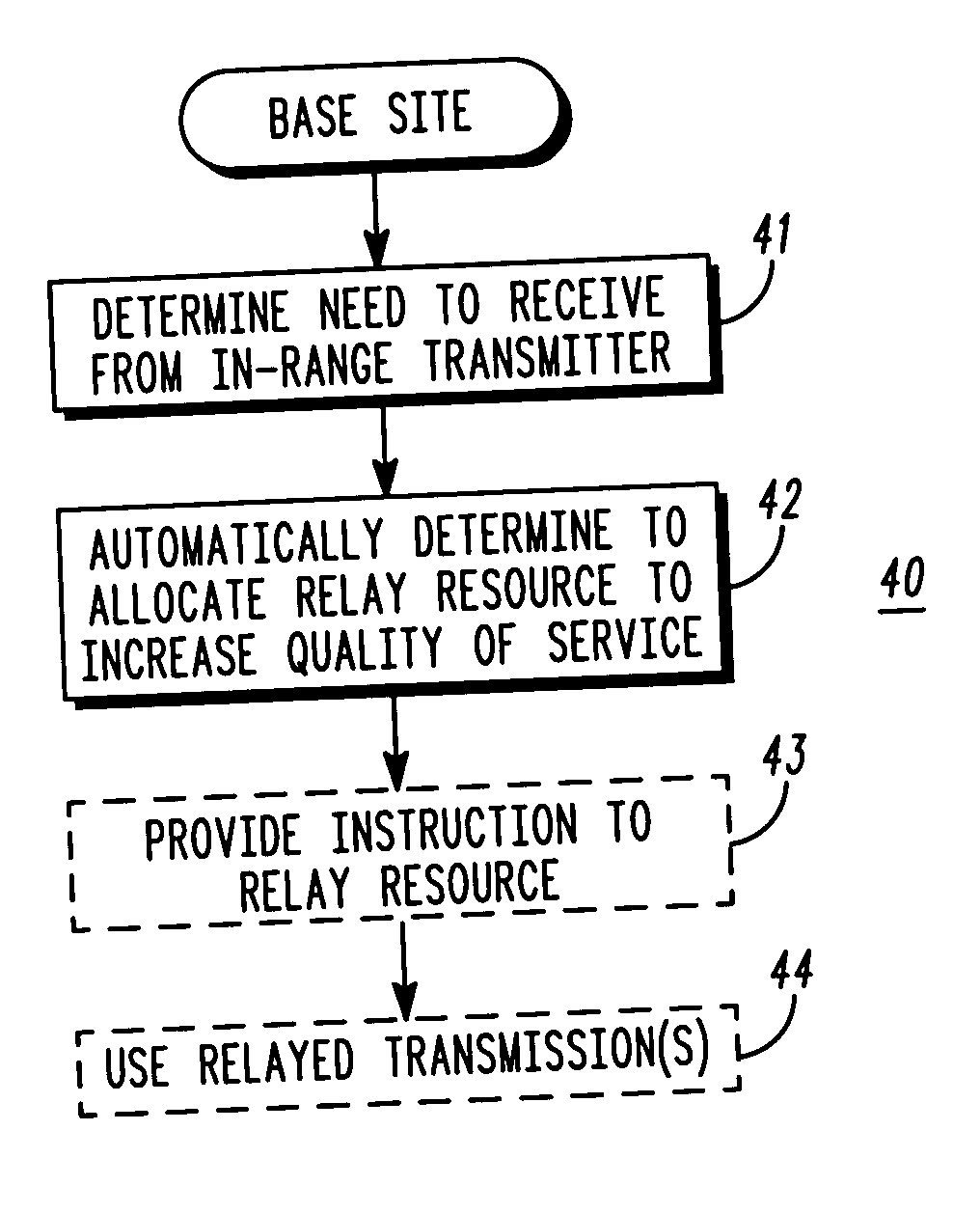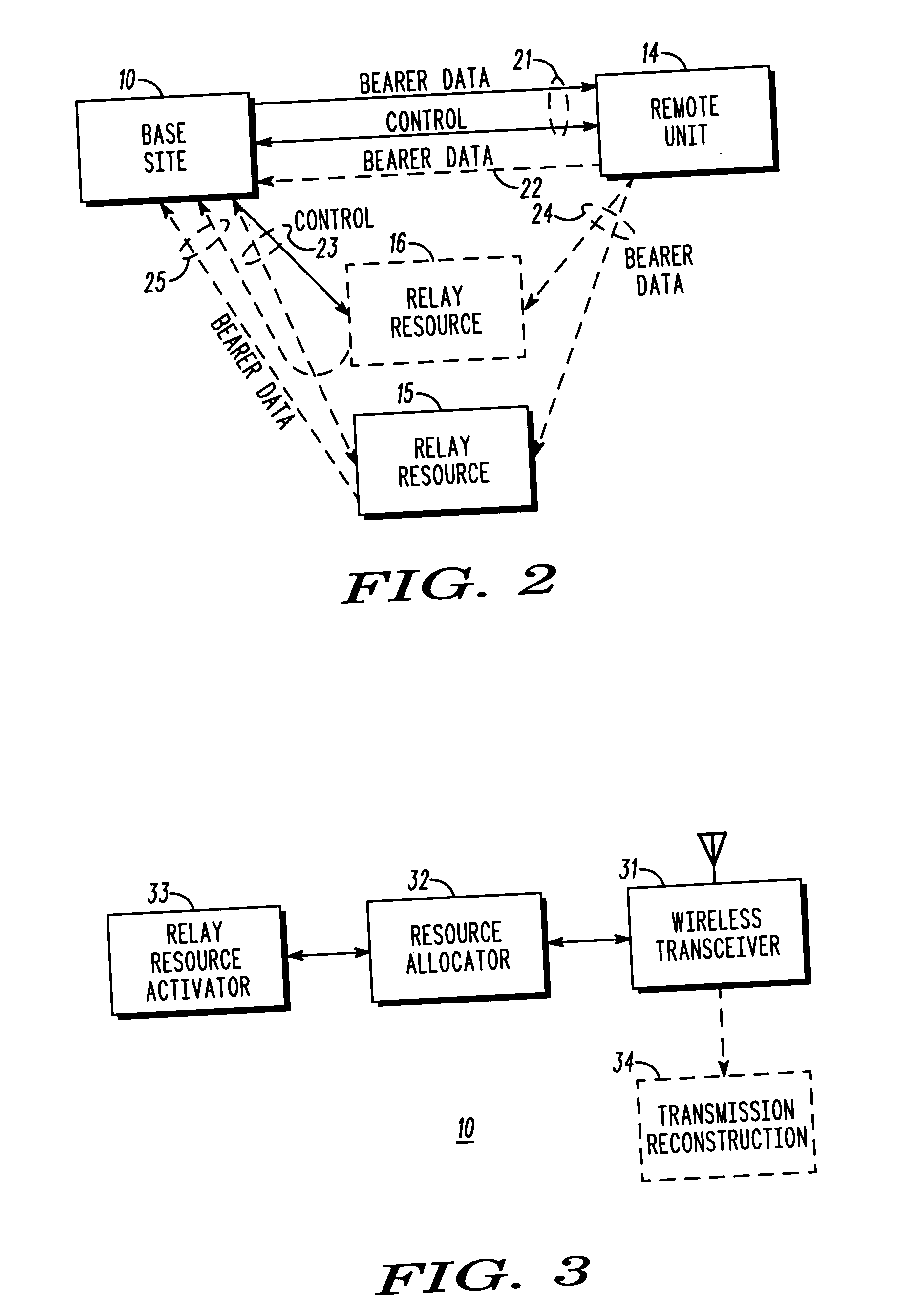Method and apparatus for relay facilitated communications
a relay and communication technology, applied in the field of wireless communication, can solve the problems of inability of otherwise in-range remote communication units to achieve the desired level of service without a concurrent significant increase in transmission power, and achieve the effect of facilitating communication without affecting the quality of service of the desired level of servi
- Summary
- Abstract
- Description
- Claims
- Application Information
AI Technical Summary
Problems solved by technology
Method used
Image
Examples
example 1
Referring now to FIG. 6, a remote unit that is within reception range of a given base site transmits an access request 61. The base site determines that a relay resource should be allocated to adequately support the quality of service needs of the requested communication and provides corresponding instructions 62 to a selected relay resource. The base site then conveys a grant 63 to the remote unit containing, for example, information identifying the bearer channel and the like. The remote unit then wirelessly transmits its bearer data 64. The relay resource receives this bearer data transmission 64 and concurrently relays 65 this transmission to the base site (using, for example, a wireline pathway to the base site).
example 2
Referring now to FIG. 7, the same sequence of events as was set forth in example 1 above can be repeated until reception of the bearer data transmission 64 by the relay resource. In this example, however, the relay resource does not effect a concurrent relaying of the received transmission. Instead, the relay resource effects a store-and-forward action by retaining the received information and relaying the information at a later time (using, for example, the same or another wireless bearer channel as was used by the remote unit to convey the original transmission).
example 3
Referring now to FIG. 8, the remote unit can again issue an access request 61, in response to which the base site can properly instruct 62 the relay resource and issue a corresponding grant 63 to the remote unit. In this example, the bearer data transmission 81 from the remote unit is conveyed to and received by the base site. In addition, the bearer data transmission is also received by the relay resource, which then effects a store-and-forward relaying 82 of that transmission to the base site. So configured, the base site has both transmissions to utilize in various ways as described above.
PUM
 Login to View More
Login to View More Abstract
Description
Claims
Application Information
 Login to View More
Login to View More - R&D
- Intellectual Property
- Life Sciences
- Materials
- Tech Scout
- Unparalleled Data Quality
- Higher Quality Content
- 60% Fewer Hallucinations
Browse by: Latest US Patents, China's latest patents, Technical Efficacy Thesaurus, Application Domain, Technology Topic, Popular Technical Reports.
© 2025 PatSnap. All rights reserved.Legal|Privacy policy|Modern Slavery Act Transparency Statement|Sitemap|About US| Contact US: help@patsnap.com



